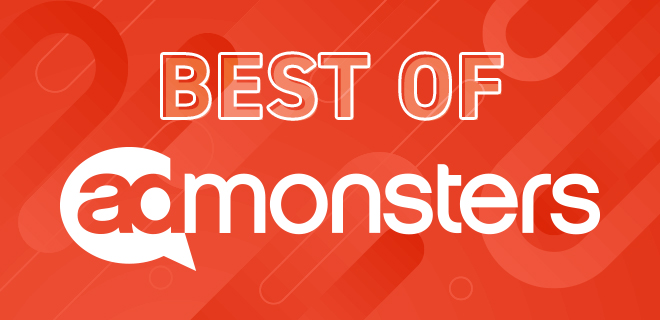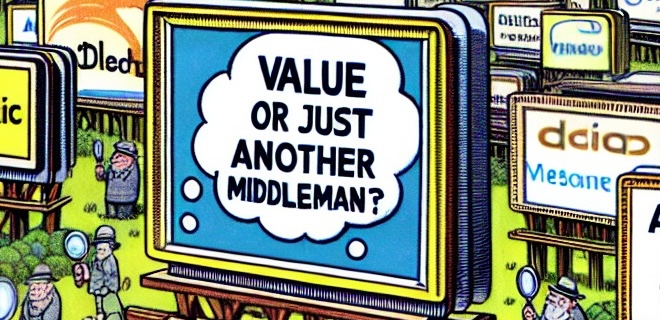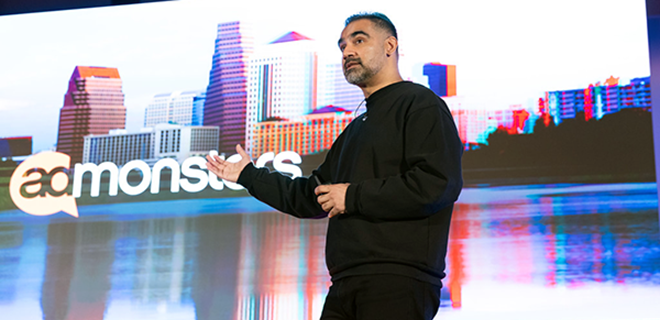
Missed the most buzzworthy ad tech stories of the year? Dive into AdMonsters Wrapper’s top six issues of 2024, where we unpacked the news that shaped digital advertising—AI, antitrust, streaming shifts, and more.
In 2024, ad tech kept us on our toes with innovation, controversy, and everything in between. From the AI surge reshaping publisher strategies to antitrust showdowns, publishers and advertisers navigated seismic shifts in the digital landscape. Through it all, the AdMonsters Wrapper delivered a weekly dose of news and analysis, highlighting the stories that mattered most to the industry.
Now, we’re taking a victory lap with the six Wrapper issues that caught your attention—clicks—the most. Whether it was AI upending ad tech norms, Google’s legal woes, or streaming giants making bold moves, these stories resonated for a reason. Let’s revisit the news that defined the year and explore what’s next for 2025.
The Top Ad Tech News Stories You Couldn’t Stop Clicking on in 2024
1. 🌯 DSPs, AI Tools, and TTD v. Yahoo
This issue opened with a deep dive into DSPs cautiously dipping their toes into Google’s Protected Audience API (PAAPI), testing privacy-focused solutions as the cookie crumble looms closer. While Amazon and Google AdWords were dragging their feet, innovators like Audigent ran full speed ahead, turning PAAPI into a competitive advantage.
Pinterest entered the AI game with Performance+, an ad tool designed to drive efficiency for advertisers. By automating campaign creation and improving metrics like CPC by 10%, the social media discovery platform hoped to set itself apart—but marketers raised eyebrows over transparency issues. 🤨
And then there was the drama of The Trade Desk flexing its muscle against Yahoo in a contentious inventory battle, reigniting questions around inventory transparency and power struggles between platforms.
Why This Matters: These stories reflect how privacy-first tech and automation can redefine ad-buying strategies while reminding us that transparency and trust remain key to ad tech’s evolution. (Read the full issue)
2. 🌯 Prime Goes Hybrid While the FTC Starts Cracking Down
Amazon Prime embraced its AVOD Lite identity, nudging customers into paying an extra $2.99 for ad-free streaming. The move highlighted a growing trend of streamers rethinking pricing strategies as consumers tighten their belts.
Meanwhile, the FTC’s Click-to-Cancel rule aimed to make unsubscribing from services as painless as signing up, rescuing consumers from subscription traps. Publishers were concerned about customer care headaches, but consumers were ready to celebrate.
Plus, Google hit the headlines twice. Once for its $700 million antitrust settlement that critics called a slap on the wrist. And then again, for reshuffling its massive ad sales team. And, between their AI innovation and legal pressures, the tech giant isn’t slowing down.
Then the battle lines were drawn between The New York Times and OpenAI, with the publisher accusing ChatGPT of using its content without compensation, signaling the start of a long and bitter fight over AI and intellectual property. ⚔️🤖
Why This Matters: From shifting subscription models to regulatory scrutiny, these stories underscored how evolving consumer expectations and legal landscapes are forcing change across digital media. (Read the full issue)
3. 🌯 Fighting Dark Traffic and Ad Blockers
Dark traffic alarmingly drains publishers’ ad revenue, but Ad Shield and Google stepped in with a certification partnership to reclaim lost dollars. With the potential to monetize ad-blocked inventory, this could be a lifeline for publishers struggling to make up for that 14-21% revenue loss. 🚫💰
Elsewhere, Turnstil offered a creative solution to bypass subscription paywalls. 🔓📖 By letting advertisers sponsor limited access for readers, Turnstil gives publishers a new monetization path without alienating potential subscribers.
Meanwhile, AI copyright battles heated up, with Perplexity AI squaring off against major publishers. Facing lawsuits from News Corp and The New York Times, the AI-powered search tool highlights the ongoing tension between legacy media and emerging tech. ⚔️🤖
Why This Matters: These stories demonstrated how publishers are rethinking monetization while fighting tech challenges like dark traffic and legal disputes over AI usage. (Read the full issue)
4. 🌯 KOSA, Deepfakes, and AI Deals
KOSA (Kids Online Safety Act) passed the Senate, sparking debates about censorship, privacy, and how publishers might navigate age-gating sensitive content. Meanwhile, COPPA 2.0 expanded protections to teens, raising concerns about how this will impact targeted advertising. 👶🔒
Google introduced algorithm updates to demote explicit deepfakes in search results, a move many say is long overdue as harmful content continues to proliferate.
On the brighter side, AI companies like OpenAI and Perplexity made headlines by inking revenue-sharing deals with publishers, signaling a shift in how content creators and tech platforms collaborate in the AI era. 🤝💻
Why This Matters: The industry is walking a fine line between innovation and regulation, as AI transforms content creation and safety issues dominate policy debates. (Read the full issue)
5.🌯 Is Data Curation Helping or Hurting Publishers?
Data curation—the buzziest phrase in programmatic—promises simplicity for advertisers but has publishers skeptical. Are these curated deals a genuine value add or just another middleman taking a cut? While some see curated deals as a win for monetization, others worry they’re just another intermediary siphoning revenue (and about losing control over inventory).
Ad tech’s reinvestment in news brought hope for journalism. Platforms like DoubleVerify and Prohaska Collective are reframing news as a safe and effective ad environment, but the jury’s still out on whether brands will follow through. 📰✨
Netflix also made headlines, defying the streaming slump by adding millions of subscribers and introducing new live programming. Their hybrid approach of cracking down on password sharing while launching an ad-supported tier is paying off in spades.
Why This Matters: Publishers are caught between embracing tools for incremental revenue and guarding against potential losses to new middlemen. (Read the full issue)
6. 🌯 Publishers Embrace AI, MFA Troubles Persist
TIME CTO Burhan Hamid set the stage for the AI revolution, urging publishers to embrace tools like content summarization and personalization to stay competitive. But with great power comes great responsibility, and Hamid reminded publishers to keep humans in the loop to fact-check AI outputs. 🤖🧠
Meanwhile, MFA (Made-for-Advertising) sites continued to entangle brands, agencies, and ad tech platforms in a web of wasteful spending. Despite advancements in verification tools, it’s clear the ecosystem still has some cleaning up to do.
And lastly, LinkedIn emerged as a publisher’s BFF, leaning into news content while other platforms pulled back. From newsletters to featured posts, LinkedIn offers publishers new tools to engage audiences and monetize their work.
Why This Matters: These stories highlighted AI’s growing influence on productivity and personalization while exposing the enduring challenges of ad quality and news monetization. (Read the full issue)
Shaping the Future of Ad Tech
If 2024 taught us anything, it’s that ad tech’s landscape is anything but static. It was a year of shifts, pivots, and recalibrations as AI moved from novelty to necessity, regulation kept platforms on their toes, and media owners explored new paths to revenue. As we turn the page to 2025, these stories highlight the challenges and opportunities shaping the next chapter of digital advertising. Whether it’s redefining trust, embracing innovation, or navigating a privacy-first world, the lessons of 2024 remind us that evolution in ad tech is constant—and there’s no such thing as standing still.





